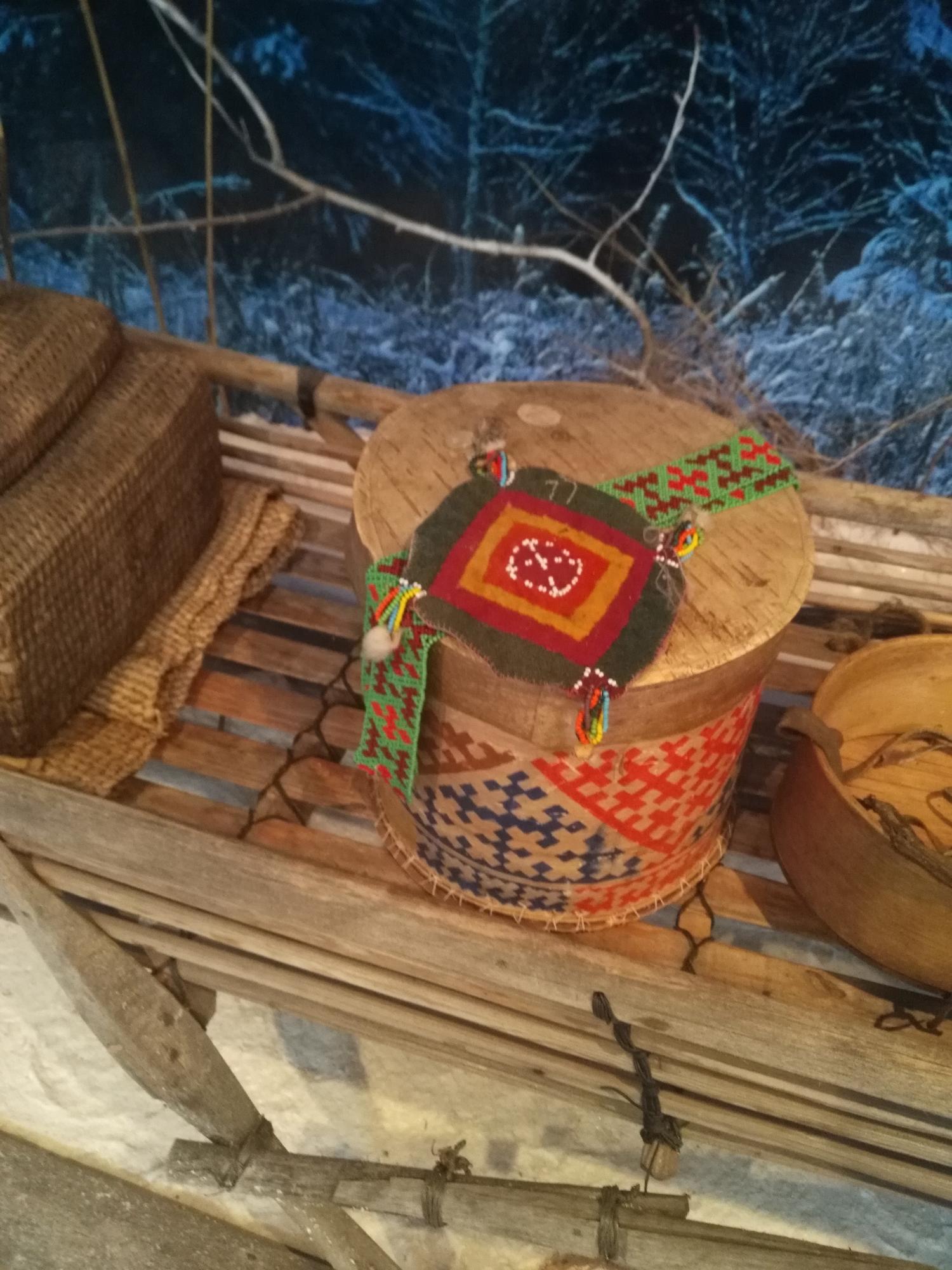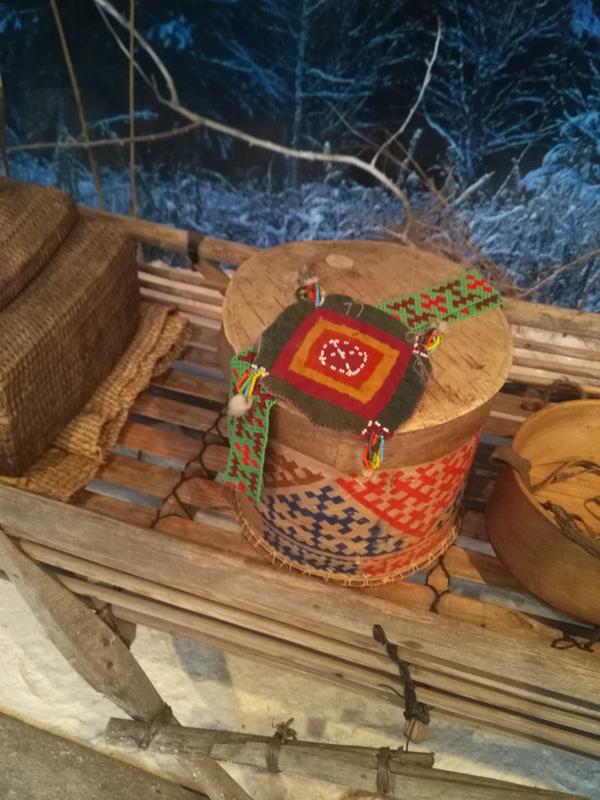A pin cushion is an object for storing needles, used by Khanty women. This object, in addition to its practical functions, has a symbolic meaning: it stresses the sacrality of women’s world in respect to men’s world, and carries the feminine spirit in it. The Khanty believe that the sacred bond between women is transmitted through the needle.
The pin cushion is stored in a special hand-made bag called tuchan, or in an ornamented box made from silver fir bark. Women never abandoned those things. A pin cushion can be given as a gift to a girl by her mother, grandmother or godmother. ‘A woman takes it as a memory, and can create new things, sew and live all her life with that memory’: that is the sense of this gift.
When a girl marries, she takes the hand-made bag and the pin cushion with her. She also takes those objects with her when she voluntarily leaves her home for her fiancé’s. That is how her parents know whether she has left the family of her own will or something has happened to her.
The pin cushion also plays an important role in the wedding ritual. Since ancient times, the Khanty lead the bride around the bridegroom’s house or inside it and put the pin cushion on the floor. It is also used in the burial ritual: it goes to a better world together with its owner and her other personal belongings. The process of ‘dying’ is designated by intentionally making a hole in the pin cushion.
The traditional pin cushion is an object whose design has a symbolic meaning as well as a practical one. The size of the pin cushion is the same as the distance between the outer edges of the owner’s eyes or as the width of her cheekbones. The artisan takes a cloth and measures the necessary distance: that will be the mean width of the side of the pin cushion. Then, four squares are cut out from felt. The squares are sewn together, forming the central part, the so-called “eye” or “heart”. This central element is not a functional part; it is decorated with buttons and beads. Small pieces of swan down with skin are sewn on the corners.
The whole surface of the pin cushion is covered with small stitches that look like footprints; they are called “deer tracks”. The seam at the working side is made almost unnoticeable, but at the reverse side, it reaches 3-4 mm and is made in circles or crisscross. On the left hand of the artisan, a holder for sinew threads is fastened. On the right hand, on a long hand-made loop or a strap with beads on it, a thimble holder is fastened. The pin cushion is kept folded up in a hand-made bag or is hung on the wall of women’s side of the house.
The pin cushion is stored in a special hand-made bag called tuchan, or in an ornamented box made from silver fir bark. Women never abandoned those things. A pin cushion can be given as a gift to a girl by her mother, grandmother or godmother. ‘A woman takes it as a memory, and can create new things, sew and live all her life with that memory’: that is the sense of this gift.
When a girl marries, she takes the hand-made bag and the pin cushion with her. She also takes those objects with her when she voluntarily leaves her home for her fiancé’s. That is how her parents know whether she has left the family of her own will or something has happened to her.
The pin cushion also plays an important role in the wedding ritual. Since ancient times, the Khanty lead the bride around the bridegroom’s house or inside it and put the pin cushion on the floor. It is also used in the burial ritual: it goes to a better world together with its owner and her other personal belongings. The process of ‘dying’ is designated by intentionally making a hole in the pin cushion.
The traditional pin cushion is an object whose design has a symbolic meaning as well as a practical one. The size of the pin cushion is the same as the distance between the outer edges of the owner’s eyes or as the width of her cheekbones. The artisan takes a cloth and measures the necessary distance: that will be the mean width of the side of the pin cushion. Then, four squares are cut out from felt. The squares are sewn together, forming the central part, the so-called “eye” or “heart”. This central element is not a functional part; it is decorated with buttons and beads. Small pieces of swan down with skin are sewn on the corners.
The whole surface of the pin cushion is covered with small stitches that look like footprints; they are called “deer tracks”. The seam at the working side is made almost unnoticeable, but at the reverse side, it reaches 3-4 mm and is made in circles or crisscross. On the left hand of the artisan, a holder for sinew threads is fastened. On the right hand, on a long hand-made loop or a strap with beads on it, a thimble holder is fastened. The pin cushion is kept folded up in a hand-made bag or is hung on the wall of women’s side of the house.



